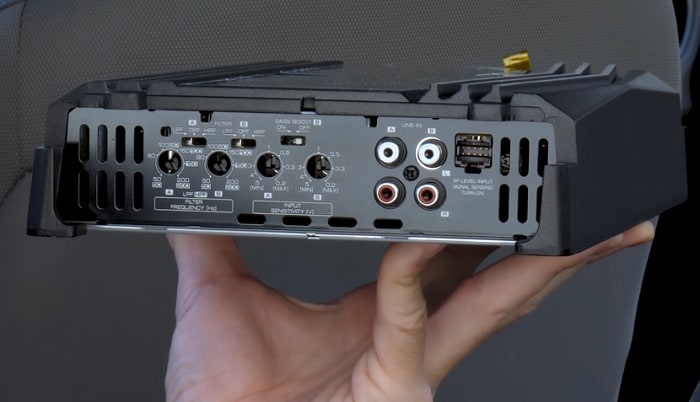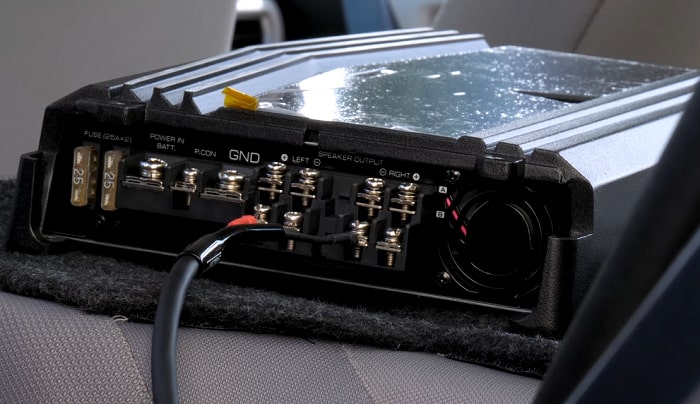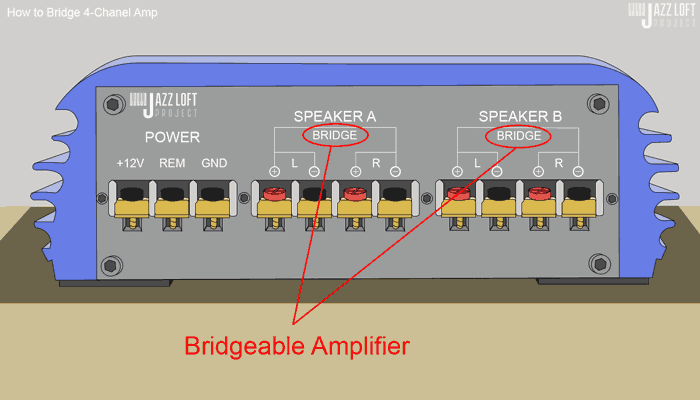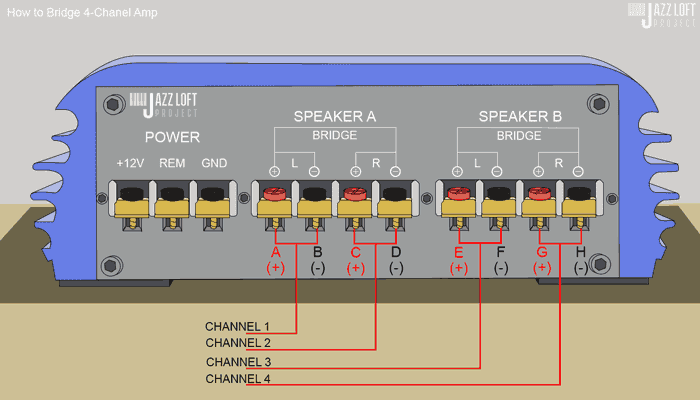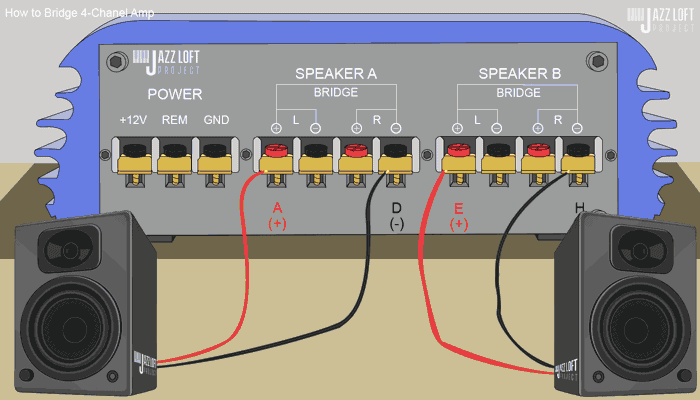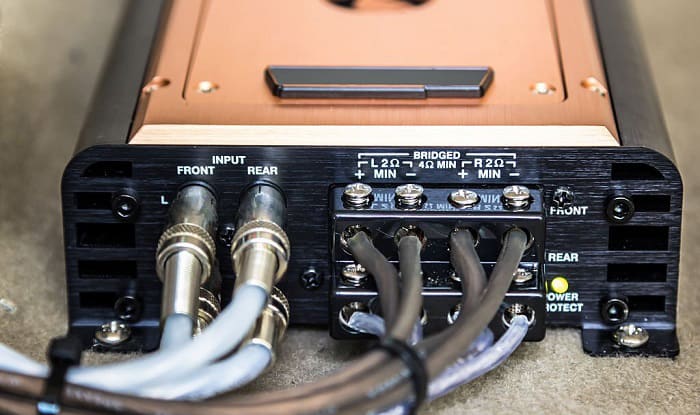Be it for a home theater or a car audio system, optimal sound quality gives a better experience and enjoyment. In both setups, amplifiers are responsible for enhancing the sound outputs. And to amplify it even further, bridging the amplifier’s channels is the usual technique.
For most people, all the wiring diagrams, channels, watts, and volts can be intimidating at first. But in reality, it’s actually as easy as finding the + and – signs.
Here’s a guide on how to bridge a 4 channel amplifier so that you may utilize your sound system’s power to its full potential.
Table of Contents
Step-by-step to Bridge a 4 Channel Amp
Technically, bridging is just a precise connection of leads to the terminals. Although not many tools are needed, there are conditions that must be met first.
What to prepare:
- Bridgeable Amplifier
- Speaker/s
- Wire Stripper
Step 1: Check if your amplifier supports bridging.
Make sure that the amplifier to be used is capable of bridging. Some are internally bridged already while some do not support it at all.
In bridging an amplifier, resistance load is cut in half. This may lead to overheating or permanent damage to the amplifier if it cannot support bridging.
Check the brochures, pamphlets, or the amplifier itself for indications. You may also counter check the specifications online.
Step 2: Identify the amplifier’s terminals, channels, positives, and negatives
At the back of a 4 channel amplifier, you will be able to see a total of 8 terminals, 4 of which are positives while another 4 are negatives. Also seen are 4 channels; a channel can be thought of as a pair of positive-negative terminals.
Once familiar, you are now ready to bridge an amplifier.
Step 3: Connect 2 speakers to the 4 channel
To bridge a speaker, connect the speaker’s positive lead to the amplifier’s positive terminal in channel 1. The speaker’s negative lead will then go to the negative terminal in channel 2.
Basically, one speaker will occupy 2 channels in order to maximize its potential. This step is similar if you are going to bridge a 2-channel amp.
Do the same process with another speaker, now using the positive and negative terminals of channels’ 3 and 4, and you have connected 2 total speakers, front and rear, to a 4 channel amplifier.
FAQs
What is car amp bridging?
Car amp bridging is the same process but applied in automobiles. This enables a better sound system surrounding your car utilizing the techniques discussed.
A car audio system may be upgraded with a subwoofer using the bridged configuration. The car’s 2 channel amplifier can be connected to one sub.
What does it mean to bridge a 4 channel amp?
This means the 4 channel amplifier is connected to 2 speakers with the sound quality at its optimal power. Bridging enables you to use your limited resources to its maximum potential.
Is bridging an amp better?
When comparing bridged amp vs unbridged, the former is definitely better. As long as the specifications are met, bridging lets you enjoy the full potential of a 4 channel amp bridged even with 1 to 2 speakers only.
Does bridging an amp make it louder?
Yes. It gives twice the power, equivalent to making it 22% louder. Bridging combines the potential output of a pair of channels into a mono output.
Can you bridge only 2 channels on a 4 channel amp?
Yes. A 4 channel amplifier will work perfectly fine even if just 2 channels are bridged. The same goes to 3 channels amp.
Can you bridge 2 amps together?
Connecting two amplifiers is possible. There are several safe ways to do so to further improve your sound system.
How does bridging improve output?
Since the signal of one channel is inverted relative to the other, twice as much voltage will be present in the speaker terminals. Thus, more power and sound is potentially released.
How much power is received by the speaker?
The formula would be max output squared divided by load impedence; or volts² / ohms.
In this sample calculation, it is assumed that the output voltage plays at +20 or -20 volts. Using a 4-ohm speaker, the power generated is 100 watts.
Conclusion
Keeping in mind the steps and considerations regarding how to bridge a 4 channel amp makes the intimidating wirings, voltages, and channels easy as identifying positive and negative signs.
You wouldn’t be needing 4 speakers to experience the best your sound system can offer. From your home theater or your car’s audio system, you can now enjoy your amplifier’s full potential even if you’re down to two speakers, or even fewer.

Sam Stephenson is a writer who grew up in Washington, North Carolina. He was 2010 and 2015 ASCAP Deems Taylor / Virgil Thomson Prize winner and a 2019-2020 Guggenheim Fellow in General Nonfiction. His books have been published by W.W. Norton, Alfred A. Knopf, and Farrar, Straus and Giroux
